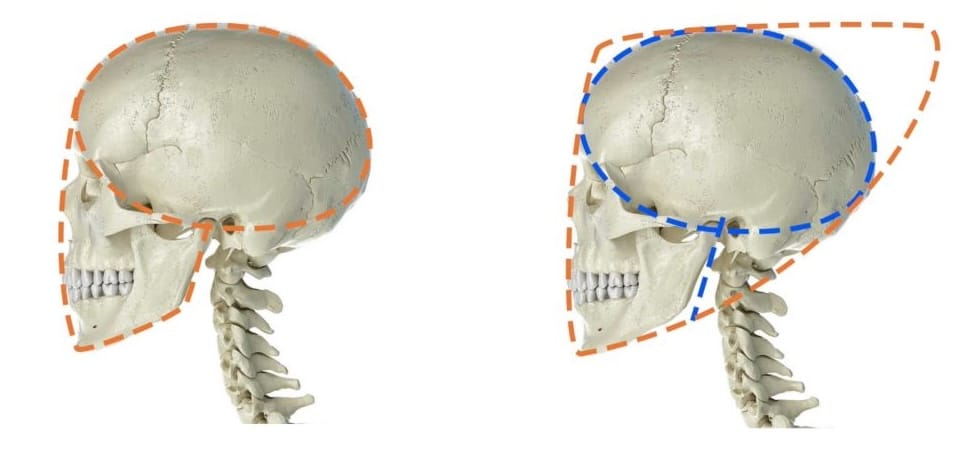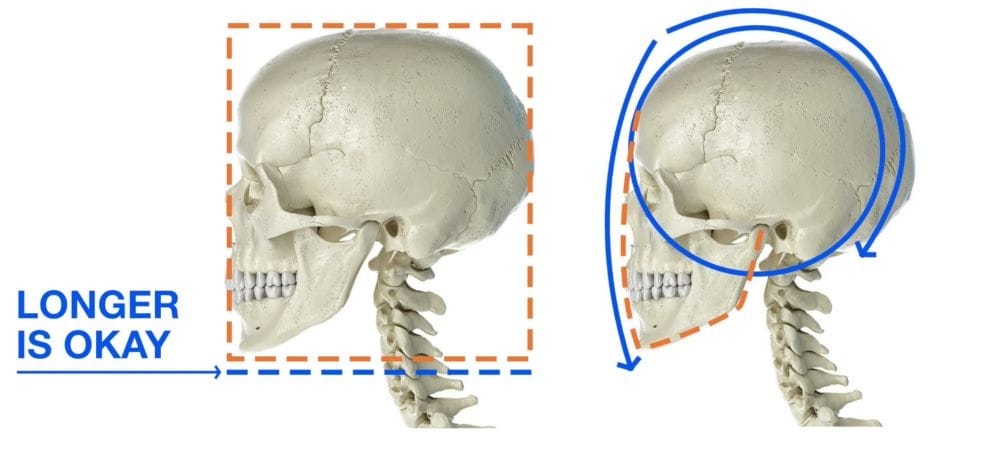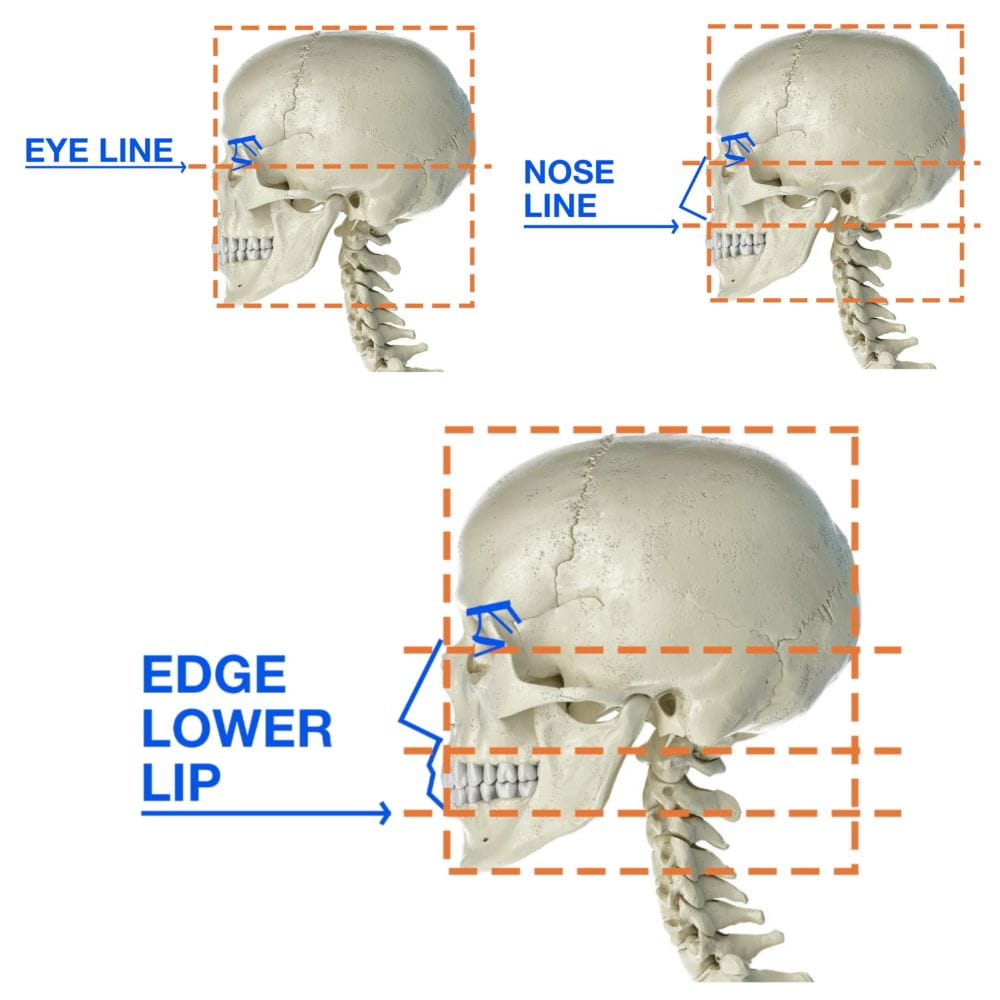Skull Profile Proportions: Understanding Structure Before Drawing
Understanding skull proportions is the foundation for accurate head drawing. This theory lesson breaks down the profile structure using simple shapes, explains the critical gesture difference between skull and face.

Before you pick up a pencil, you need to understand the underlying structure. In this lesson, I break down the proportions and anatomy of the skull profile so you can draw with confidence in the next lesson.
What You'll Learn
- The two main shapes: egg (skull) vs square (face mask)
- Critical proportions and their relationships
- The gesture that makes heads look human (not alien)
- Where the neck connects to the skull
- The division method for accurate feature placement
Video Lesson
The Two-Shape Foundation
When drawing a skull from the profile, think of it as two distinct shapes:
- The Skull (Cranium) - Best described as an egg shape that can vary from elongated to spherical depending on the person
- The Mask of the Face - A more square, boxy shape that holds the eyes, nose, and mouth
The mask has a different character than the skull, and understanding where one ends and the other begins is crucial for accurate drawings.
Alternative Approach: The Upside-Down Sail
Some artists prefer starting with an upside-down sailboat shape. This is quicker and simpler, but you'll need to refine it later by adding curves and adjustments. Choose whichever method gets your ideas down quickly and captures the character of your subject.

Understanding Gesture vs Structure
Here's where most beginners go wrong: The skull moves BACK while the face moves DOWN.
This change in direction is what makes a head look human. When you make the skull too spherical or round, you lose this gesture and the head starts looking alien. The skull should sit up nice and high while the mask clearly sits below it.
Common error: Cropping off the back of the skull makes it too round, eliminating that backward gesture. Watch for this!

The Rectangle Proportions Method
Draw a rectangle around the bare skull and face (no nose, hair, or features):
Key insight: The rectangle is longer on the face side than on top of the skull.
The Division Method
- Divide rectangle in half horizontally = Eye line (where lids meet)
- From eye line to chin, divide in half = Bottom of nose (where it meets mouth)
- From nose to chin, divide in half = Edge of lower lip
This gives you perfect placement for facial features every time.
Pro tip: If you're going to make an error, better to have a slightly fuller chin than too short. The same applies to the back of the face versus the top of the skull.

Where the Neck Connects
The back of the neck connects to the skull at roughly eye level - specifically, where the bottom of the top eyelid sits.
Get this wrong and your entire proportions fall apart:
- Skull too small = neck connects too low, looks skinny
- Skull too big = neck connects way below eye level
Common Mistakes to Avoid
- Making the skull too spherical (alien look)
- Cropping the back of the skull
- Placing the neck connection incorrectly
Study Assignment
Before the next lesson (where we'll actually draw this), spend time studying:
- Look at skull references and identify the egg + square shapes
- Notice the gesture in profile photos of people
- Observe where the neck connects on real heads
Next Lesson: We'll put this theory into practice with a complete skull profile drawing demonstration.
Continue Learning
- Next: Skull Profile Drawing Demo
- Previous: materials (coming soon)
- Visit the Head Drawing Hub for a complete list of available lessons
Continue Learning
If you enjoyed this hand drawing course, explore even more lessons on our Free Drawing Tutorials & Courses Hub — including the complete How to Draw – Beginner’s Course.
Want new tutorials delivered to your inbox? Subscribe here and get free lessons, tips, and inspiration sent directly to you.




